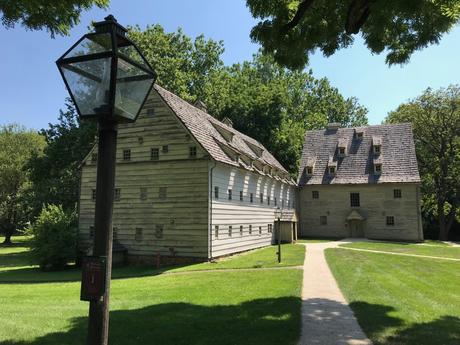Conrad Beissel isn’t exactly a household name. I never heard of him until a visit to Ephrata Cloister during a Lancaster staycation. My wife knew about the Ephrata Cloister due to a music course she took at the University of Michigan; he was influential in developing a distinctive musical style. Since we were in the area we stopped in for the tour. Beissel was banished from what would become Germany in the early eighteenth century. He made his way to America where he established a kind of monastery in south central Pennsylvania in the early 1700s. Not Catholic, he was inspired by German Pietists, the Anabaptists, and Christian Mysticism. Not ordained, he established what became a Seventh-Day Baptist association because whenever he tried to settle as a hermit others came to him.
Celibacy has always been a hard sell for religions. Once his Camp for the Solitary was established, it grew to about 300 members, with only some 80 celibates, or solitaries. This 80 was half men and half women. They built around 40 buildings in what was then the frontier and they couldn’t have survived without the 120 or so married people who joined the church but continued to live at home with their families. Like many separatist groups, the Seventh-Day Baptists were expecting Jesus’ return at any day and lived their lives accordingly. Not strict about others joining him in this, Beissel was an early vegetarian, eventually becoming primarily a vegan (although that name wouldn’t develop for a couple centuries). They had midnight worship services since they believed Jesus would return in the middle of the night. They were, with the supportive families, self-sufficient. The group established a printing press, and at one time it was possibly the largest printing operation in the colonies.

After Beissel died, the community continued. They realized that, like all celibate communities, it would be difficult to survive and the celibacy rule was dropped. The last celibate member died in 1813. The community by then had taken on the form of an independent church and it survived until the 1930s. The remaining land—some of it had been sold off over the years as the community shrank—was bought in the early forties to be preserved by the state. Theirs was never a very large group, but it was significant enough that their memory was felt to be important enough to preserve. Beissel wasn’t alone in establishing such sects here in Pennsylvania. The tradition is, interestingly, part of the American heritage and demonstrates how the religious, ordained or not, live in their own worlds.
